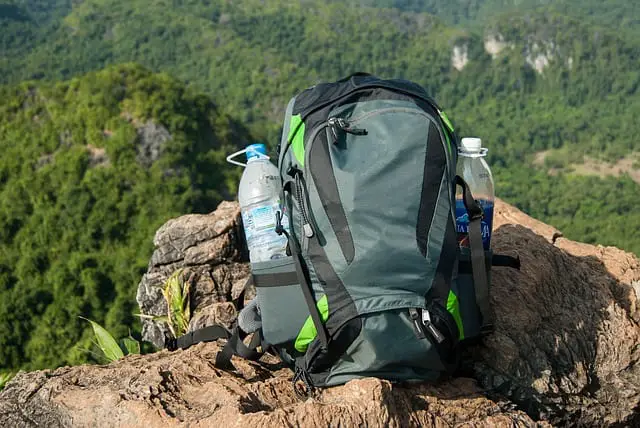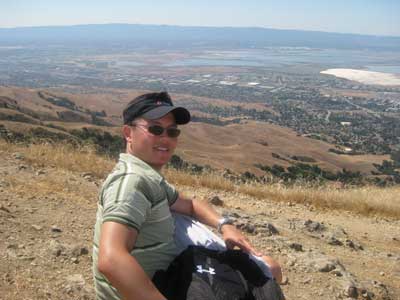
Pikes Peak offers stunning views, picturesque mountains, blue skies, clean air, and more than 14,000 feet of altitude. It’s a truly amazing place to visit – but proper preparation is a must if you plan on climbing this peak.
Most of the peak’s mountainous attractions are at higher elevations ‒ specifically at least 7,000 feet above sea level. This altitude is capable of producing altitude sickness ‒ an uncomfortable and potentially dangerous condition caused by the lack of oxygen at higher elevations.
If you plan on climbing Pikes Peak, this article will help you learn about altitude sickness and how to deal with it.
Altitude Sickness Symptoms on Pikes Peak
The summit of Pikes Peak maxes out at 14,115 feet, which is far beyond the 8,000 feet elevation required for the average person to experience altitude sickness. Most travelers who come from low altitudes are at risk for a variety of altitude sickness-related symptoms.
Before we get into the specific symptoms though, I first want to talk about the categories of altitude sickness:
Acute Mountain Sickness (AMS)
This is the mildest form of altitude sickness. It does pose a health risk, but the symptoms are generally pretty mild.
High Altitude Pulmonary Edemia (HAPE)
This form of altitude sickness is a bit more dangerous. The danger comes from insufficient acclimation to the altitude caused by fluids collecting in the lungs.
High Altitude Celebral Edemia (HACE)
This is the most dangerous form of altitude sickness. It is extremely deadly, and is characterized by inadequate acclimation to altitude due to fluids collecting in the brain.
HACE and HAPE are rare and only experienced at an elevation of 12,000 feet and up. Some of the more severe symptoms associated with these types of altitude sickness include:
- Shortness of breath
- Loss of consciousness
- Significant memory loss
- Significant disorientation
- Speech disorder
- Wet crackling sounds inside the lungs when breathing
- Loss of muscle control
While these more severe types are possible, the most likely form of altitude sickness you’ll experience on Pikes Peak is AMS.
Any person affected by AMS may start to feel symptoms from half an hour to two hours after high altitude exposure. The severity and speed of the symptoms increase as the physical activity increases. Typical symptoms include:
This article is owned by Recapture Nature and was first published on September 18, 2019
- Nausea
- Lessened cognitive abilities
- Fatigue
- Headache
- Clumsiness
- Vomiting
- Mild memory loss
- Mild disorientation
No matter how much hiking experience you have, the chance of altitude sickness makes the trail up to the Pikes Peak summit somewhat dangerous. Every climber who attempts this hike needs to be physically fit and prepared for the risks associated with high altitude hiking.
Altitude Sickness Prevention Tips

You should be able to enjoy the beauty Pikes Peak without putting your health at risk.
When climbing the mountain, you should remember that with a higher elevation comes an increased risk of altitude sickness. To help prevent altitude sickness as you reach the highest points on the mountain, you can use the following tips:
Stay hydrated
It is critical to drink a lot when you are in the Peak. Count your ounces and drink now and then to get your daily fluid intake requirement here. Locals here also advise starting your water intake days before the climb.
Conserve your energy
Have fun and stay healthy during the climb. You may be too excited to go but your body needs to make some adjustments to properly function in low-oxygen conditions. Perhaps try some of the attractions at low-land days before the ascent. You can even ask or research on how to acclimate yourself.
Watch what you eat
Watch what you eat before and during the trip. Grab foods which will help you thrive at the Peak’s altitude such as bananas, chocolate, potatoes, broccoli, tomatoes, avocado, celery, dates, granola, and greens. They are a good source for electrolyte replenishment as they balance your salt intake.
Don’t drink alcohol
It is easy to get super-fast and tipsy at higher altitude. Alcohol effect is more pronounced when having strenuous physical activity above sea level. This does not necessarily mean alcoholic drink abstinence though. Just take it slow or match it with water. Back off and drink some water when you start feeling woozy. This is a precaution as alcoholic beverages can cause deterioration of your much-needed strength during the hike.
Get acclimated to higher altitudes
If you’re new to the Colorado area, you should take some time to acclimate yourself to the higher altitudes before attempting a 14,000 foot climb like Pikes Peak. This will prepare your body for the relative lack of oxygen near the summit, and decrease your chances of getting altitude sickness.
Here are a couple of additional altitude acclimation tips:
- Climb some of the smaller mountains before attempting a fourteener like Pikes Peak.
- Talk to a local mountaineering guide and ask them for acclimation advice.
What to do if You Get Altitude Sickness
Even hikers who take every precaution can still come down with altitude sickness. As a result, it’s important you know how to proceed if you or one of your hiking partners gets sick.
This article is owned by Recapture Nature and was first published on September 18, 2019
- Don’t climb alone. If you do get altitude sickness, you don’t want to have to deal with it by yourself. Using the buddy system is imperative for dealing with altitude sickness in a safe and effective manner.
- Stop the climb. Don’t ascend any further.
- Try to descend. If you have the energy, try to make your way down the mountain. If you don’t have the energy for a descent, sit down and rest.
- Breathe deeply. Taking deep breaths will help to reduce carbon dioxide levels in the bloodstream.
- Use an oxygen tank. If you brought an oxygen tank, apply the mask to your face and take some deep breaths.
- Take some aspirin. A dose of aspirin can help combat the effects of altitude sickness.
If descent is impossible, the following drugs can help improve the situation by increasing oxygen saturation:
- Acetazolamice
- Nifedipine
- Phosphodiesterase-5 inhibitors
- Salmerol
Altitude Sickness: Additional Information
Knowledge is the best defense against preventable conditions like altitude sickness. This section will provide some additional information that should help you prevent and treat any instances of altitude sickness on Pikes Peak.
- About 25 percent of people who travel to the ski areas of Colorado and the Peak report some symptoms of altitude sickness or mountain sickness.
- Rapid ascent is the most significant and risk factor of altitude sickness, as it limits the time the has body to adjust to the changes in air pressure and oxygen levels. Other factors include strenuous physical exertion, living at low altitude area, and previous health conditions.
- Being physically fit and young does not lessen the risk of mountain sickness and it can affect no matter your gender.
- Mountain climbers are particularly likely to develop mountain sickness, which is a form of altitude sickness.
- You should never ignore altitude sickness at its onset, as it can be very dangerous and even fatal.
- Altitude sickness can technically occur at elevations as low as 5,000 feet. However, this is extremely unlikely.
- Altitude sickness is most likely to occur after spending at least 4 hours at an elevation of 6,500 feet or more.
- Some research indicates that men are at greater risk than women are. However, any human who spends a significant period of time above 6,500 feet is at risk.
- You can’t build immunity to altitude sickness. A climber with 1,000 high elevation hikes under their belt is still at risk.
Conclusion
Pikes Peak is one of the tallest mountains in the United States. If you aren’t prepared for the significant risk posed by altitude sickness, you’ll be putting yourself at serious risk when you climb up to the summit.
The most common symptoms of altitude sickness are…
- Nausea
- Lessened cognitive abilities
- Fatigue
- Headache
- Clumsiness
- Vomiting
- Mild memory loss
- Mild disorientation
To prevent altitude sickness…
This article is owned by Recapture Nature and was first published on September 18, 2019
- Stay hydrated.
- Conserve your energy.
- Watch what you eat.
- Don’t drink alcohol.
- Acclimate yourself to higher altitudes.
To safely deal with altitude sickness…
- Don’t climb alone.
- Stop the climb.
- Descend if you can.
- Breathe deeply.
- Use an oxygen tank.
- Take an aspirin.

